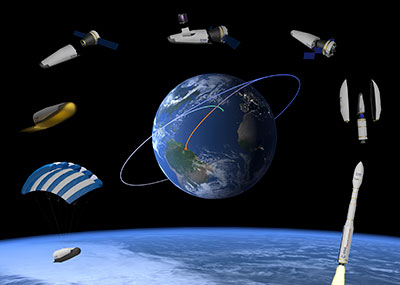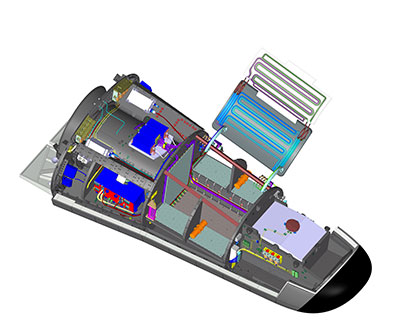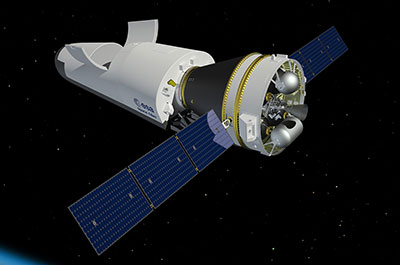Announcement of opportunity to fly payloads on ESA's Space RiderESA is offering the opportunity for payloads to ride on board the first return flight, and future flights, to low orbit of its reusable Space Rider. Applications should reach ESA by 30 November.
Space Rider's planned debut is in 2023. Launched on a Vega-C rocket, it will provide a laboratory in space for an array of applications, orbit altitudes and inclinations. ESA has released a dedicated Announcement of Opportunity with no restriction on nationality for commercial or institutional customers.

Scientific experimentation in microgravity for pharmaceutics and biology are key examples of a Space Rider service.
Other examples include in-orbit demonstration and validation of technologies for applications such as robotics for exploration, instrumentation for Earth observation, surveillance for Earth disaster monitoring, and satellites inspection.
This is also an opportunity for non-space sector companies to benefit from activities in the space arena.

Space Rider is about the size of two minivans. Its reentry module hosts a multi-purpose cargo bay which offers 1200 litre volume for up to 600 kg of customer payloads.
Payloads are integrated in the reentry module multi-purpose cargo bay with standardised but customisable interfaces. This reentry module, coupled with the AVUM orbital module supplies power along with thermal, control, data-handling and telemetry capability during missions expected to last up to two months or longer if needed.
Customers assisted by the Space Rider telemetry and command services will be able to upload and download commands and data at each orbital pass.
On completion of the missions, Space Rider will return to Earth with the payloads safely stowed in its cargo bay. After reentering Earth's atmosphere, Space Rider will land on European territory. The vehicle will be reusable following refurbishment after each flight.
ESA's Space Rider offers an affordable, independent, reusable end-to-end space transportation system for routine transport in and return from low Earth orbit. Different landing sites are being considered: Kourou in French Guiana, Santa Maria in the Azores archipelago (Portugal), additional sites in Italy under consolidation.
An interested organisation should register with ESA via the esa-star portal in order to demonstrate their interest. Information on how to register with ESA and how to use esa-star is available on the How to do section of the Business with ESA portal.
Further information on this Announcement of Opportunity is available at 'Interact 8' in ESA-star registration. Please register to gain access to further details.














